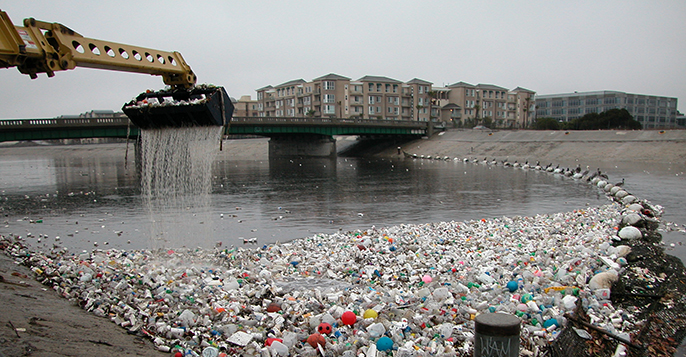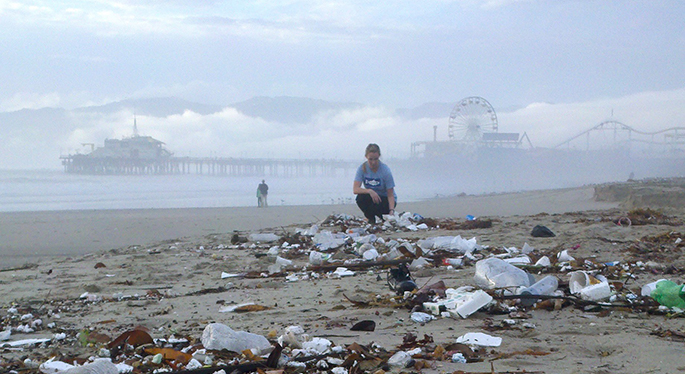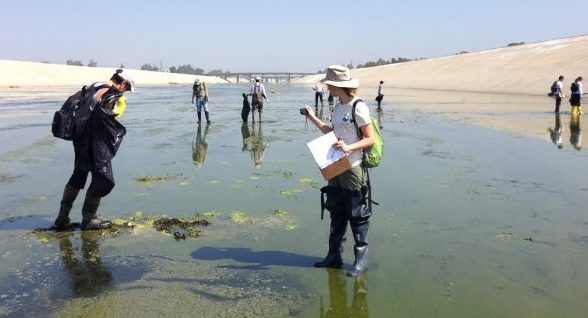The predominant source of trash in California’s coastal areas is not beachgoers, boaters or anglers, but rather a diffuse storm drain network. Storm drains across coastal California were built to efficiently move water off the land to prevent flooding; however, the storm drain systems that terminate at the coastal zone also funnel and transport trash from across hundreds of square miles of urban landscapes. To combat this challenge, California’s stormwater management community has refocused its efforts in recent years on retrofitting tens of thousands of storm drain entry points with custom-designed mesh screens to deflect all but the smallest trash particles. More aggressive street sweeping, source control measures, and multi-benefit stormwater management projects also are part of stormwater managers’ multi-pronged trash-reduction strategy.
SCCWRP is part of a community of researchers conducting foundational work to track the spread of trash in coastal ecosystems, as well as systematically documenting the effectiveness of trash-reduction measures. SCCWRP’s goal is to ensure that public dollars are being optimally spent to improve water quality and protect the health of aquatic ecosystems.

Evolving strategies for trash management
Historically, California’s coastal management community has focused on eliminating trash generated by those who frequent beaches and other coastal areas. Beachgoers, boaters and anglers have been targeted with strict anti-littering laws, community outreach and public education campaigns. But over the past two decades, water-quality managers increasingly have shifted focus to urban storm drain systems – the source of an estimated 60% to 80% of human-created debris in marine environments.
Beginning in the mid-1990s, the Los Angeles Regional Water Quality Control Board began adding waterways with high documented levels of trash to a federal list of impaired water bodies. Known as a 303(d) listing, the designation allowed regional water-quality regulators to develop plans compelling agencies that discharge into storm drains to reduce trash loading.

Informing statewide trash reduction strategies
Many of the trash-reduction strategies and approaches pioneered by the Los Angeles Regional Board are now being scaled up for application to all California water bodies impacted by high trash levels. California’s trash reduction program, which will be implemented in phases over a 10- to 15-year span, centers around two basic compliance options:
As these trash-reduction plans are implemented over the next decade or so, environmental managers and the public will need scientifically sound methodologies for measuring effectiveness over time and determining whether the approaches are achieving their long-term goals. SCCWRP and its partners are developing cost-effective, repeatable methods for quantifying trash levels in various settings (e.g., roadways vs. stream banks). SCCWRP also is conducting foundational work to better understand how trash is traveling through and accumulating in aquatic ecosystems – and its long-term biological impacts.

